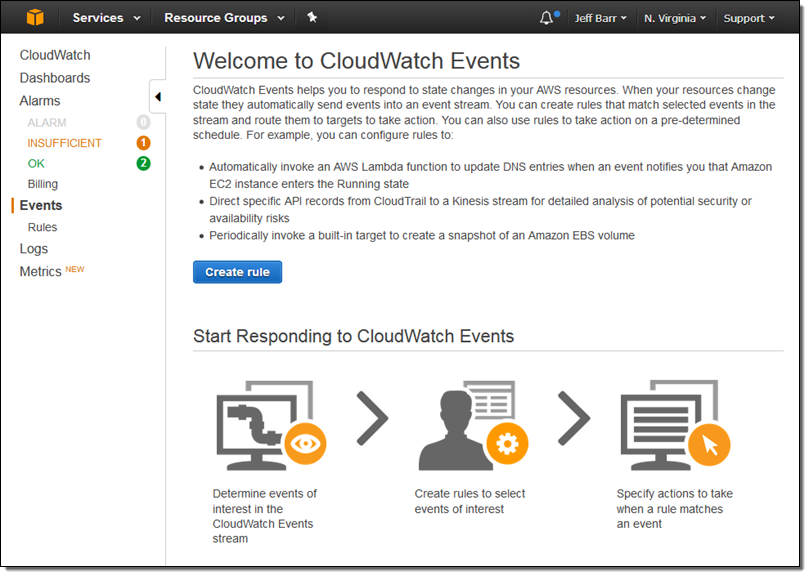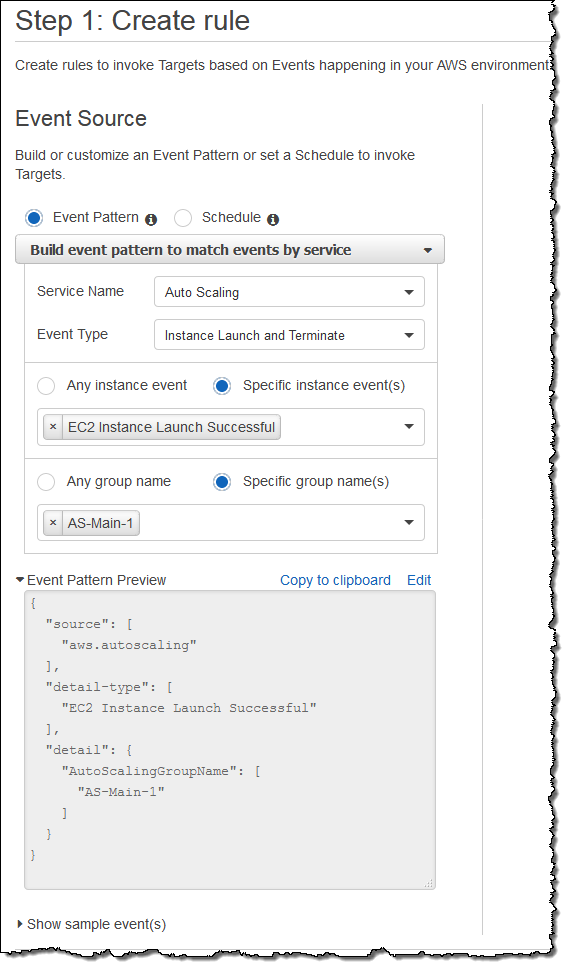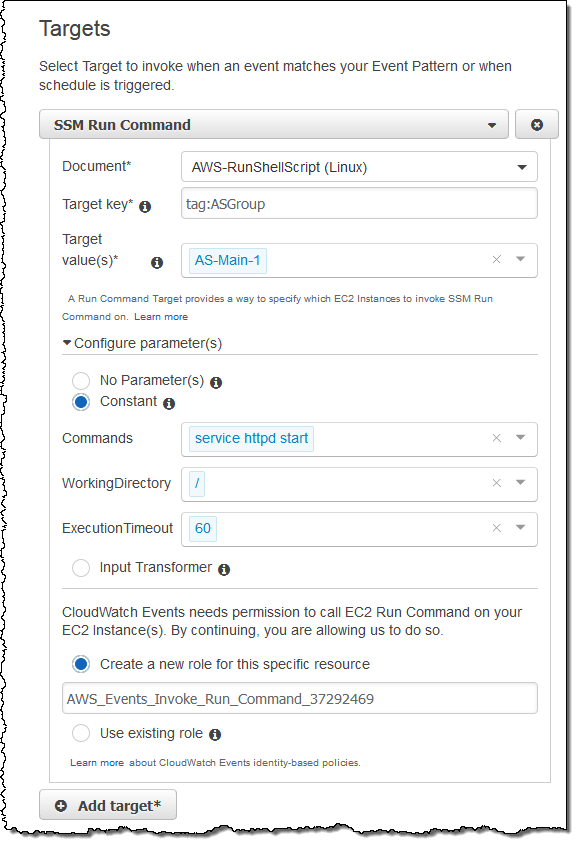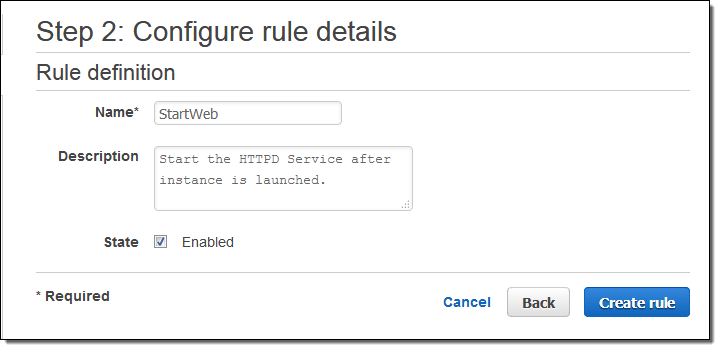AWS News Blog
EC2 Run Command is Now a CloudWatch Events Target
Ok, time for another peanut butter and chocolate post! Let’s combine EC2 Run Command (New EC2 Run Command – Remote Instance Management at Scale) and CloudWatch Events (New CloudWatch Events – Track and Respond to Changes to Your AWS Resources) and see what we get.
EC2 Run Command is part of EC2 Systems Manager. It allows you to operate on collections of EC2 instances and on-premises servers reliably and at scale, in a controlled and selective fashion. You can run scripts, install software, collect metrics and log files, manage patches, and much more, on both Windows and Linux.
CloudWatch Events gives you the ability to track changes to AWS resources in near real-time. You get a stream of system events that you can easily route to one or more targets including AWS Lambda functions, Amazon Kinesis streams, Amazon SNS topics, and built-in EC2 and EBS targets.
Better Together
Today we are bringing these two services together. You can now create CloudWatch Events rules that use EC2 Run Command to perform actions on EC2 instances or on-premises servers. This opens the door to all sorts of interesting ideas; here are a few that I came up with:
Final Log Collection – Collect application or system logs from instances that are being shut down (either manually or as a result of a scale-in operation initiated by Auto Scaling).
Error Log Condition – Collect logs after an application crash or a security incident.
Instance Setup – After an instance has started, download & install applications, set parameters and configurations, and launch processes.
Configuration Updates – When a config file is changed in S3, install it on applicable instances (perhaps determined by tags). For example, you could install an updated Apache web server config file on a set of properly tagged instances, and then restart the server so that it picks up the changes. Or, update an instance-level firewall each time the AWS IP Address Ranges are updated.
EBS Snapshot Testing and Tracking – After a fresh snapshot has been created, mount it on a test instance, check the filesystem for errors, and then index the files in the snapshot.
Instance Coordination – Every time an instance is launched or terminated, inform the others so that they can update internal tracking information or rebalance their workloads.
I’m sure that you have some more interesting ideas; please feel free to share them in the comments.
Time for Action!
Let’s set this up. Suppose I want to run a specific Linux shell command every time Auto Scaling adds another instance to an Auto Scaling Group.
I start by opening the CloudWatch Events Console and clicking on Create rule:

I configure my Event Source to be my Auto Scaling Group (AS-Main-1), and indicate that I want to take action when EC2 instances are launched successfully:

Then I set up the target. I choose SSM Run Command, pick the AWS-RunShellScript document, and indicate that I want the command to be run on the instances that are tagged as coming from my Auto Scaling group:

Then I click on Configure details, give my rule a name and a description, and click on Create rule:

With everything set up, the command service httpd start will be run on each instance launched as a result of a scale out operation.
Available Now
This new feature is available now and you can start using it today.
— Jeff;